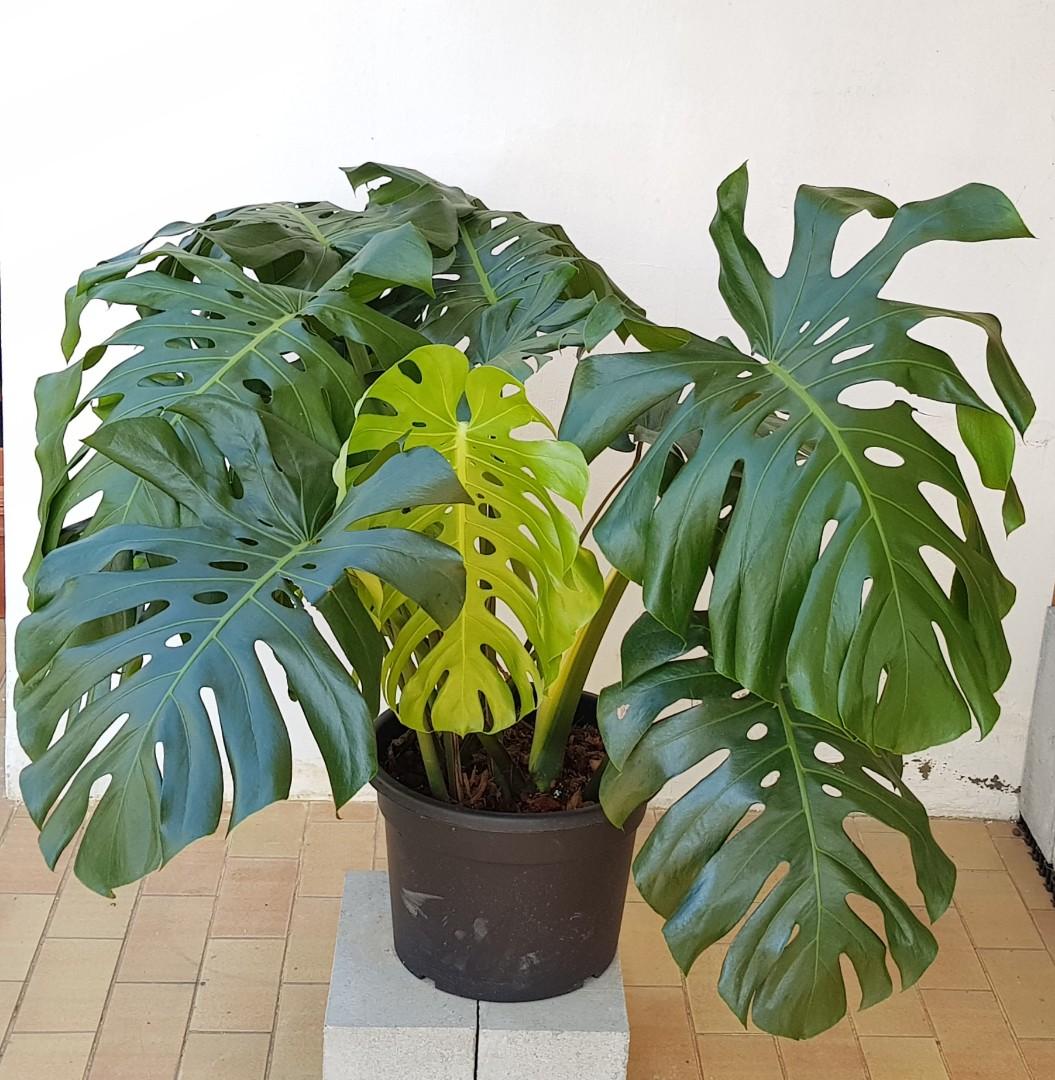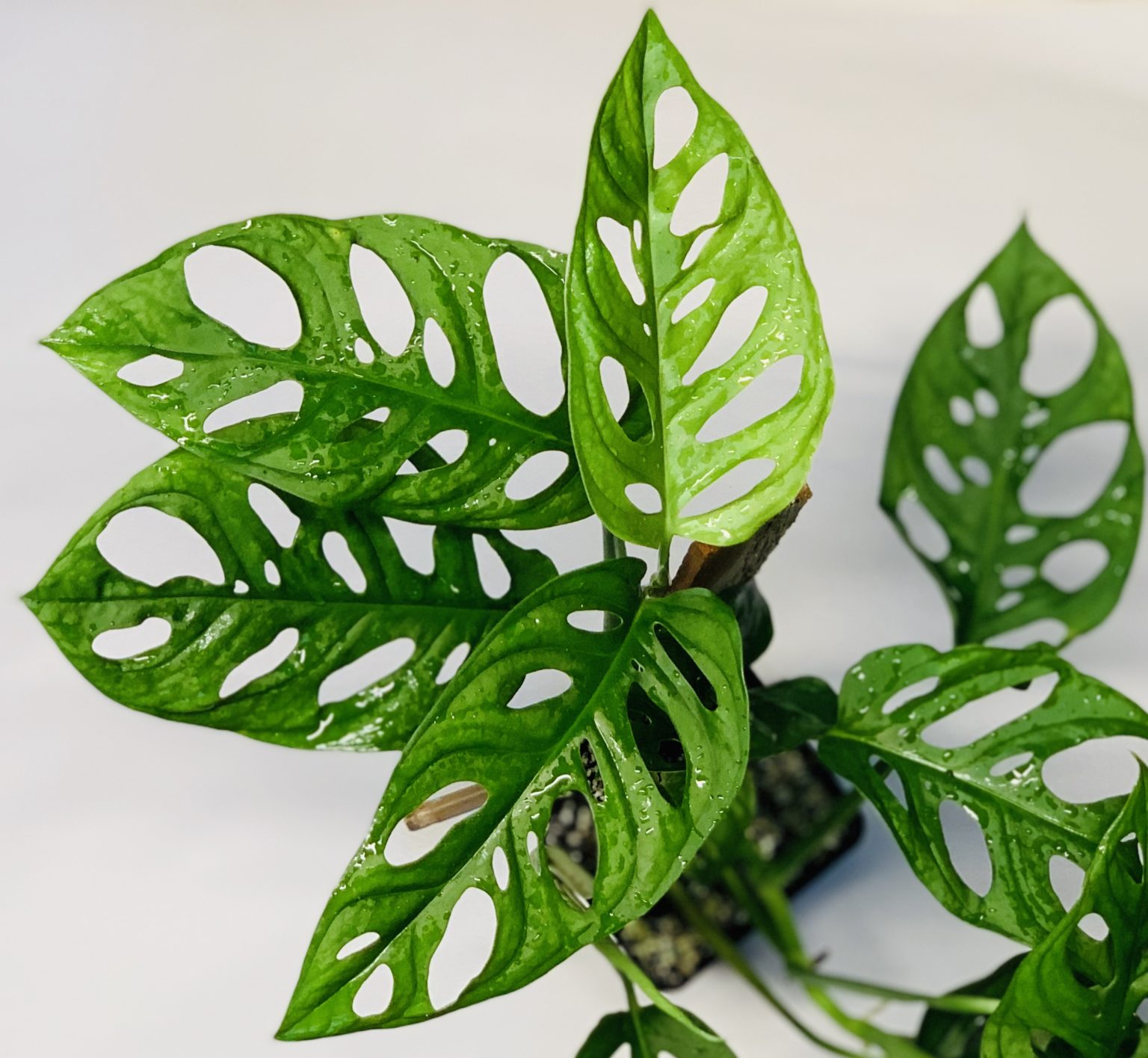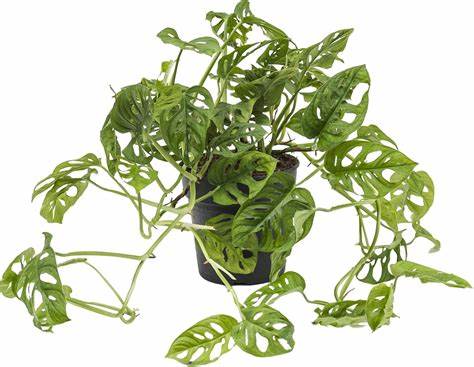Monstera is a tropical plant, which loves a humid environment. Monstera has two types of roots underground roots and aerial roots, underground roots grow below ground, and aerial roots anchor plants to trees, walls, and other above-ground surfaces, allowing the plant to climb.
Type :
1) Monstera Deliciosa

2) Monstera Adansonii

3) Monstera Obliqua

Common name : Swiss Cheese Plant
How to Plant : Monstera is very easy to propagate from stem cuttings. Cut from the existing plant below the leaf node about min 3 to 4 inches long, then remove all lower leaves.
- In water ( do not add any fertilizer to water )
- In soil ( In a mixture of 1/3 - red soil, 1/3 - coco peat, 1/3 - compost, and some amount of perlite (50gm to be precise) or sand for better drainage)
Active growth period : It grows well from Spring to fall (March to December).
If monstera is growing in water, change the water every once a week, do not add any fertilizer to the water, and only use tap water because tap water has required nutrition and minerals.
If monstera is growing in soil, add a good amount of fertilizer (100 - 150 gm) once a month. Preferably use organic fertilizer like any type of compost (normal compost or vermicompost). Don’t use an in-organic one, it will damage roots.
Sunlight : Need bright to medium filtered light. Or 1-2 hr in sunlight but not harsh, it should be afternoon sunlight. If you see leaves are growing in yellowish and very light green means sunlight is too harsh for the plant.
Water : Give water when the top half-inch of soil dries. Or add water once a week, don’t overwater the plant, it will harm the underground roots. If plant leaves change their color to light brown to brown that means the plant is over watered, in that case repotting the plant is necessary to save it.
Humidity : Monstera plant loves the humid environment and it will grow well in a humid environment, if you live in a dry environment area, where the humidity level is below 40%, put a humidifier to boost the humidity level indoors.
Soil : The plant loves well-drained soil. Make soil mix with better drainage components.
Temprature : 18C to 30C is the best temperature condition. If the temperature rises put the plant inside a room in a bright area.
Problems cause and solution :
SYMPTOM: Leaves turning brown and crispy at the edges
CAUSE: Thirsty plant, underwatered or high salt build-up
SOLUTION: Give water regularly and give a humid environment for thirsty plants. If the top of the soil shows a white layer or white particles you need to check your water salt level, always use water that has less salt content.
——————————————–
SYMPTOM: Wilting plant, dry potting mix
CAUSE: Underwatered or pot-bound (roots are taken away from a pot)
SOLUTION: Give a good amount of water for some days till plant leaves become normal. For a pot-bound repotting plant to a bigger pot.
——————————————–
SYMPTOM: Yellowing leaves to light brown to brown or black stems
CAUSE: Overwatered
SOLUTION: Repotting and changing soil is the best option, if not possible put the plant outdoor and don’t water till the soil dries, also add some perlite and dry coco peat to the soil.
——————————————–
SYMPTOM: Grows yellow or very light green leaves
CAUSE: Bright sunlight
SOLUTION: Put the plant indoors and cut damaged leaves.
——————————————–